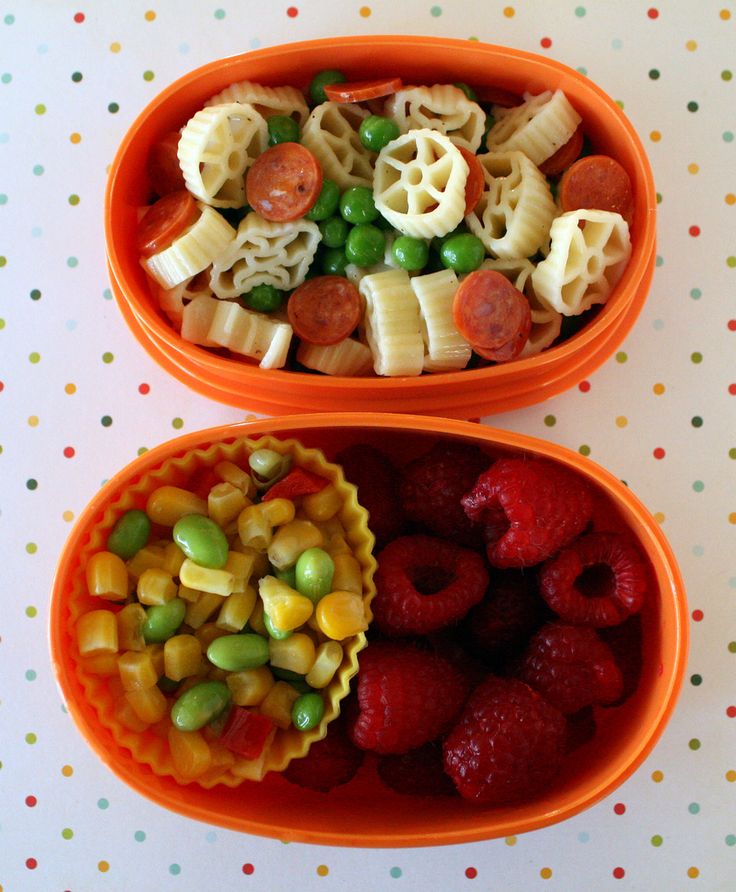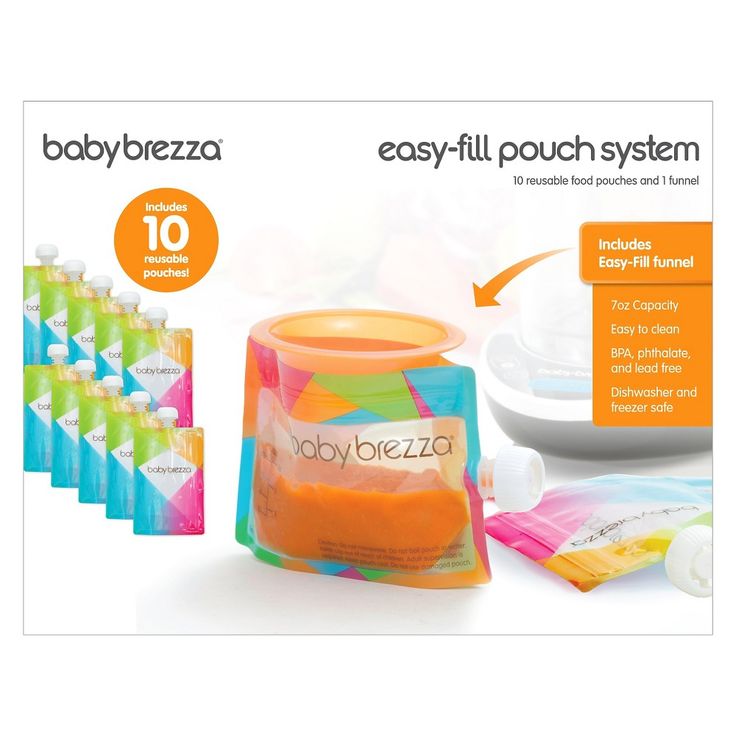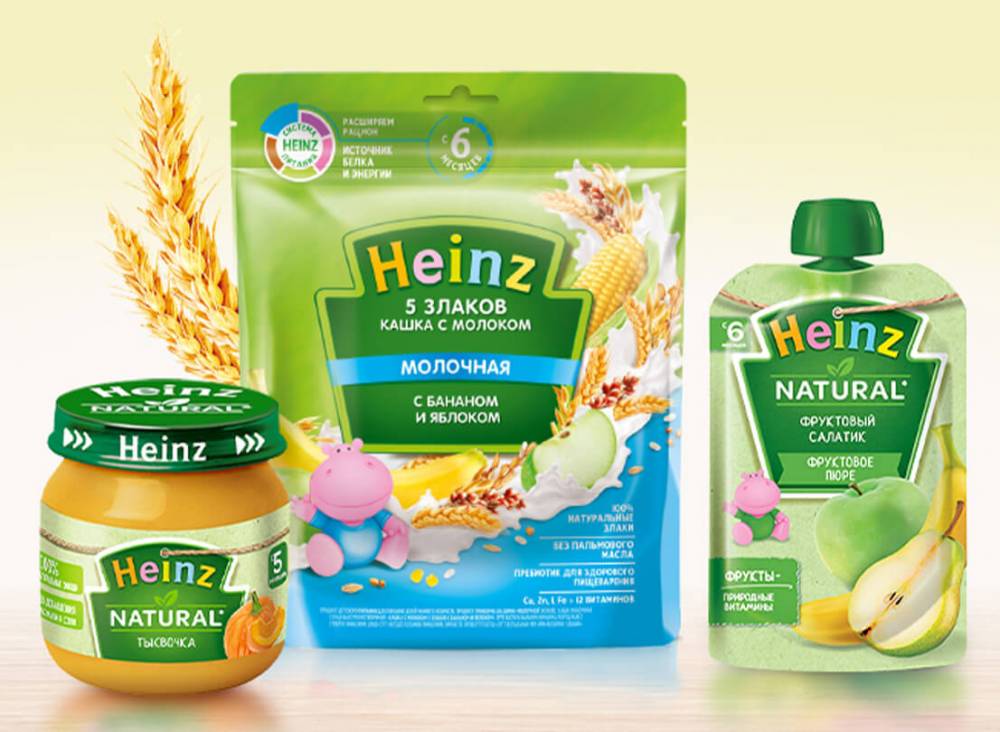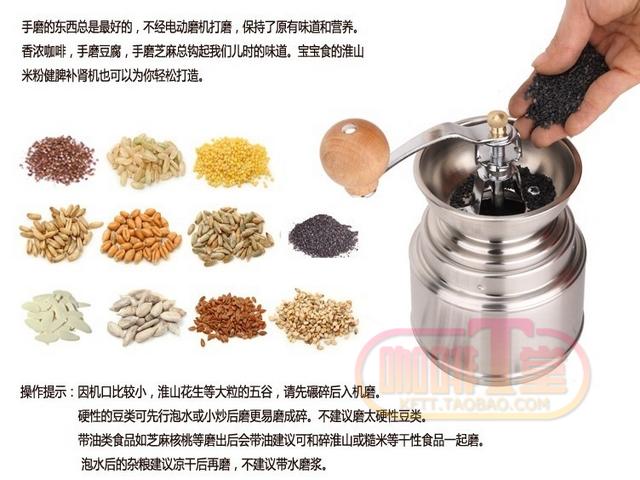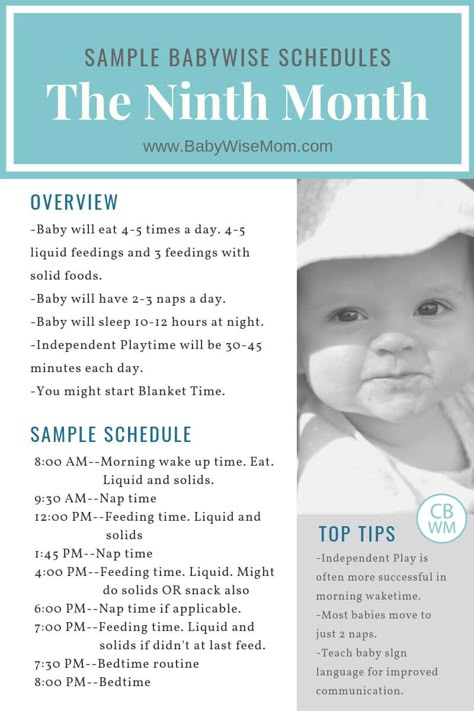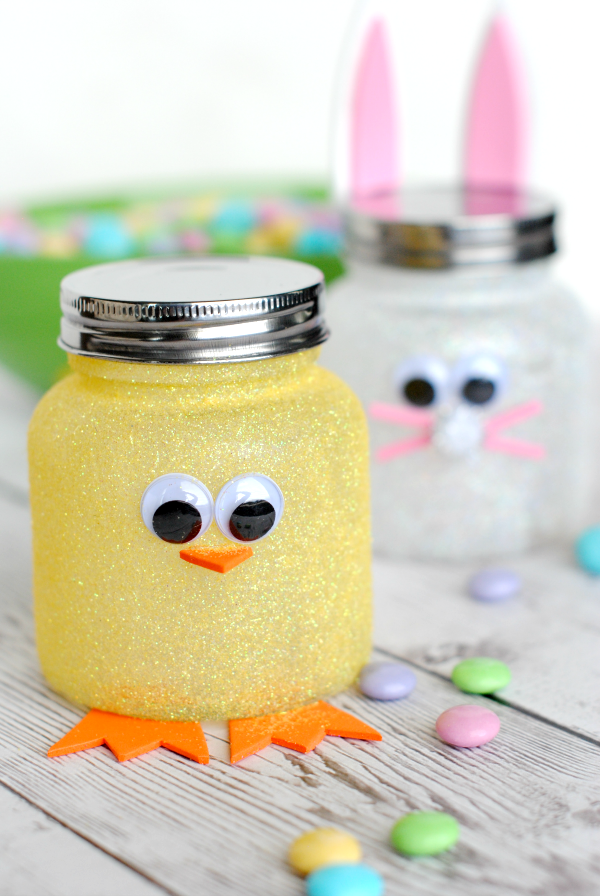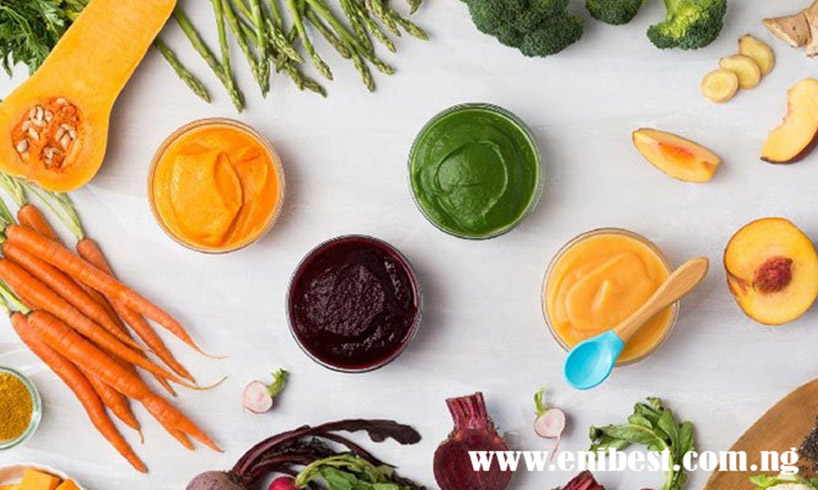First foods for baby australia
Introducing solids: why, when, what & how
Solid foods: why babies need them
As babies get older, they need solid food to get enough nutrients for growth and development. These essential nutrients include iron, zinc and others.
For the first 6 months of life, babies use iron stored in their bodies from when they were in the womb. They also get some iron from breastmilk and/or infant formula. But babies’ iron stores go down as they grow. By around 6 months, babies need to start having solid food.
Introducing solids is also important for helping babies learn to eat, giving them experience of new tastes and textures from a range of foods. It develops their teeth and jaws, and it builds other skills that they’ll need later for language development.
Signs that it’s time to introduce solids
Signs your baby is ready for solids include when your baby:
- has good head and neck control and can sit upright when supported
- shows an interest in food – for example, they look at what’s on your plate
- reaches out for your food
- opens their mouth when you offer them food on a spoon.
Most babies start to show these signs by around 6 months, although this can vary.
It’s recommended not to introduce solids before 4 months.
If your baby is nearing 7 months of age and hasn’t started solids, you might like to get some advice from your child and family health nurse or GP.
The best times of day to introduce solids
When you’re first introducing solids, it’s good to offer solids when you and your baby are both happy and relaxed.
This is often after a feed of breastmilk or formula. Babies will still have room in their tummies for a taste of new foods after a feed of breastmilk or formula. But if they’re really hungry before a feed, they just want the breastmilk or formula that they know satisfies their hunger.
As time passes, you’ll learn when your baby is hungry or full, not interested or tired.
Signs of hunger include your baby:
- getting excited when they see you getting their food ready
- leaning towards you while they’re sitting in the highchair
- opening their mouth as you’re about to feed them.
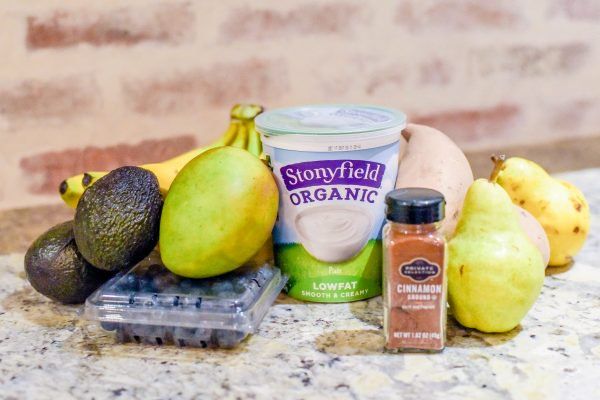
Signs your baby is no longer interested include:
- turning their head away
- losing interest or getting distracted
- pushing the spoon away
- clamping their mouth shut.
Your baby’s appetite can vary from day to day.
How much food to offer when introducing solids
When you’re first introducing solids, try offering 1-2 teaspoons of food once a day. At first, your baby might have only a small taste and probably won’t swallow much.
As your baby grows, you can increase the amount according to your baby’s appetite and signs.
By 12 months, your baby should be eating around 3 small meals a day, plus breastmilk or infant formula.
The right textures for first foods
When your baby is ready for solids, first foods might be smooth or finely mashed, depending on what baby likes. Over the next weeks and months, your baby can move on to roughly mashed or minced foods and then chopped foods.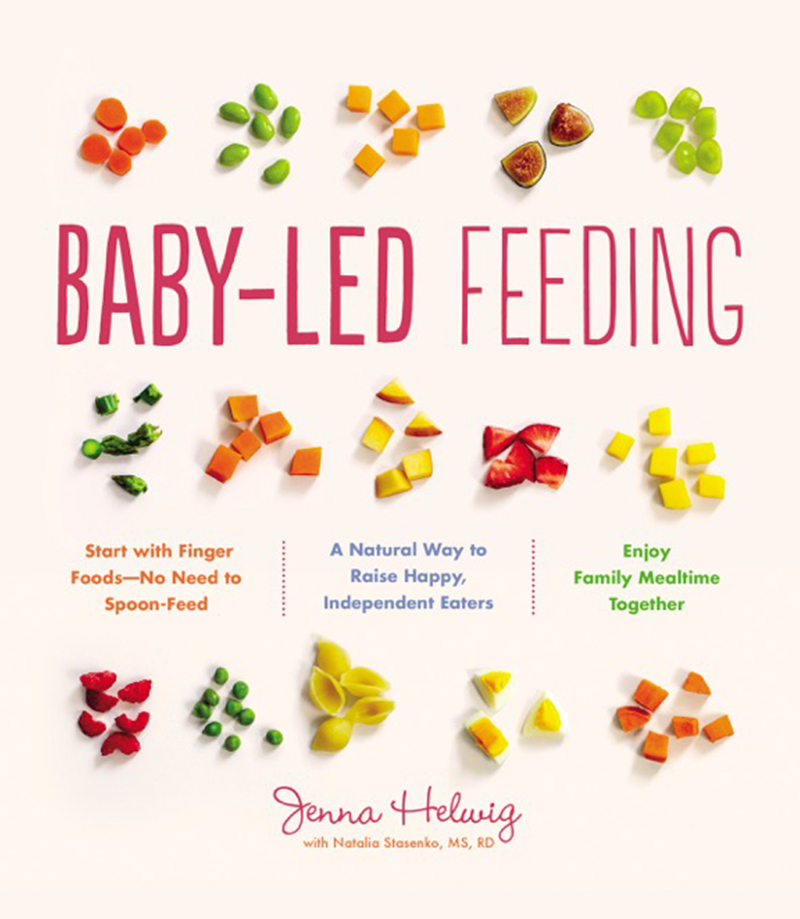 All foods should be very soft.
All foods should be very soft.
Your baby needs a variety of food textures. This helps your baby learn how to chew, and chewing helps with speech development and self-feeding. It also helps to prevent feeding difficulties as your baby develops. Babies can chew even before they get their first teeth.
By the time your baby is 12 months old, they should be eating the same foods that the rest of the family is eating. But you might still need to chop some foods into smaller pieces and cook vegetables until they’re soft.
To prevent choking, always supervise babies and young children while they’re eating solid food. Avoid nuts, take special care with pieces of meat and check fish for small bones, because these are choking hazards. And if your baby can move around, make sure baby is sitting down while they’re eating. If you sit with your baby while they’re eating, baby is less likely to move around.
Types of food to offer when introducing solids
All new foods are exciting for your baby.
The key is to include iron-rich foods of the right texture in your baby’s first foods. Iron-rich foods include:
- iron-fortified infant cereal
- minced meat, poultry and fish
- cooked tofu and legumes
- mashed, cooked egg (avoid raw or runny egg).
To these iron-rich foods, you can add other healthy foods of the right texture like:
- vegetables – for example, cooked potato, pumpkin, sweet potato, carrot, broccoli or spinach
- fruit – for example, banana, apple, pear, melon or avocado
- grains – for example, oats, bread, rice and pasta
- dairy foods – for example, yoghurt and full-fat cheese.
You can introduce any number of new foods at a time and in any order. When you offer your baby a variety of foods, they can try plenty of new tastes and get a range of nutrients.
Read our tips for introducing solid foods to learn how to get your baby interested in new foods and manage mealtime mess and play.
Breastmilk and infant formula while introducing solids
You should keep breastfeeding or using infant formula until at least 12 months.
When you start introducing solids, breastmilk or infant formula should still be the main source of your baby’s nutrition. Over the next few months, your baby will start having more solids and less milk or formula. The rate that this happens will vary.
By around 9 months, babies have generally developed enough chewing and swallowing skills to move from having milk before solids to having milk after solids.
Here are some signs that your baby is getting enough nutrition from both solids and breastmilk or formula during this time. Your baby:
- has plenty of wet nappies – at least 6-8 wet cloth nappies or 5 very wet disposables in 24 hours
- is alert and mostly happy after and between feeds
- is gaining weight at about the right rate – your child and family health nurse will weigh your baby at your regular check-ups.
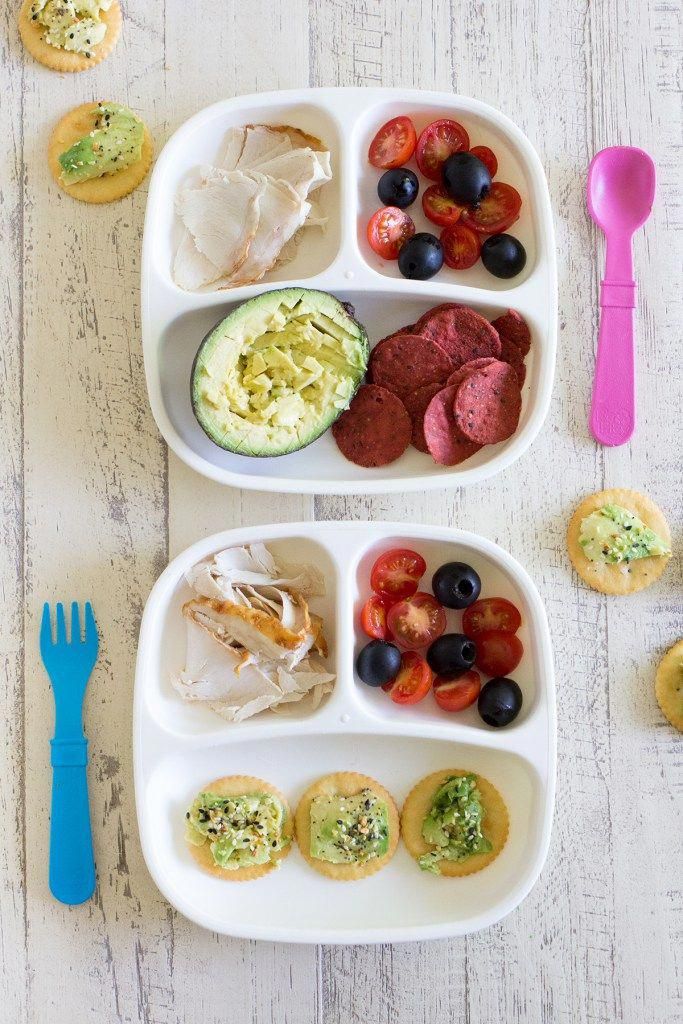
From 12 months onwards, solids should be the main source of your baby’s nutrition. Your baby doesn’t need infant formula after 12 months, but you can keep breastfeeding for as long as you and your baby like.
If solid food replaces breastmilk and/or infant formula too quickly, babies can miss out on important nutrition. If you have any concerns about your baby’s feeds or weight, talk to your midwife, child and family health nurse, lactation consultant or GP.
Introducing water
Once your baby has reached 6 months, you can start to offer baby cooled, boiled water in a cup at mealtimes and at other times during the day. This is so your baby can practise drinking from a cup, but baby still doesn’t really need fluids other than breastmilk or formula at this age.
Once your baby has reached 12 months, you can offer fresh tap water without boiling it.
Foods and drinks to avoid while introducing solids
There are some foods to avoid until your baby is a certain age:
- Honey until 12 months – this is to avoid the risk of infant botulism.
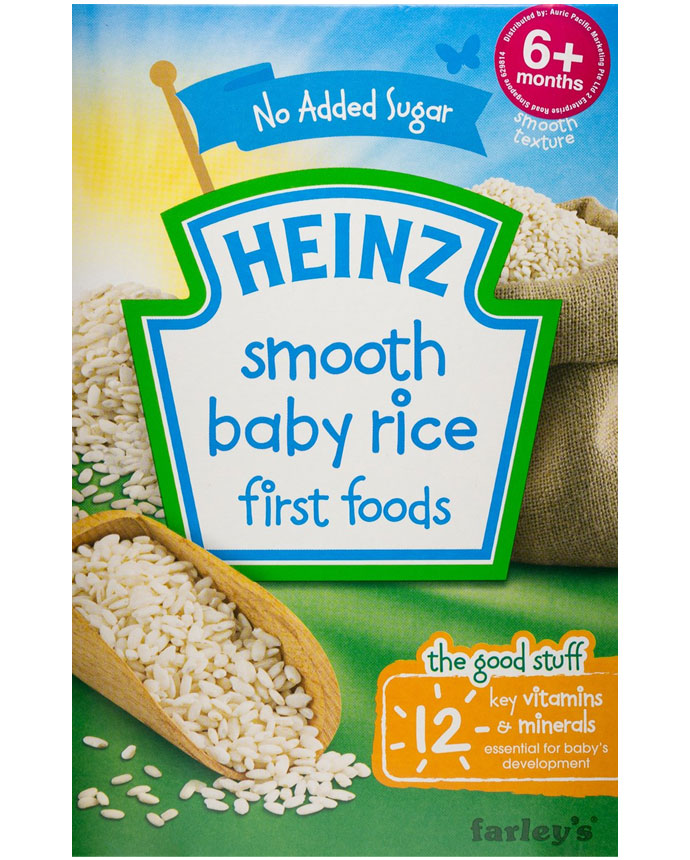
- Raw or runny eggs and foods containing raw eggs like home-made mayonnaise until 12 months – bacteria in raw eggs can be harmful to babies.
- Reduced-fat dairy until 2 years – babies need full-fat dairy for growth.
- Whole nuts and similar hard foods until 3 years – these are choking hazards.
There are some drinks to avoid until your baby is a certain age:
- pasteurised full-fat cow’s milk as a main drink until 12 months
- dairy alternatives like soy, goat’s, sheep’s, rice, oat, almond and coconut milk until 2 years, unless your GP or child and family health nurse has recommended these for a particular reason
- unpasteurised milks at all ages
- tea, coffee or sugar-sweetened drinks at all ages
- fruit juice – this should be limited at all ages (whole fruits are better because they have fibre and help babies develop chewing and feeding skills).
Your baby doesn’t need added salt or sugar. Processed or packaged foods with high levels of fat, sugar and/or salt aren’t good for babies and children. These foods include cakes, biscuits, chips and fried foods.
Processed or packaged foods with high levels of fat, sugar and/or salt aren’t good for babies and children. These foods include cakes, biscuits, chips and fried foods.
Food allergy and introducing solids
Introducing allergenic foods early can reduce the risk of your child developing food allergy. Allergenic foods are foods that might cause allergies.
All babies, including babies with a high allergy risk, should try solid foods that might cause allergies from around 6 months of age. These foods include well-cooked egg, peanut butter and other nut butters, wheat (from wheat-based breads, cereals and pasta) and cow’s milk (but not as a main drink).
Once you’ve introduced an allergenic food, it’s a good idea to regularly include it in your baby’s diet.
It’s a good idea to get advice from your GP, child and family health nurse, dietitian, paediatrician or allergy and immunology specialist for the following reasons:
- Your baby already has a food allergy.
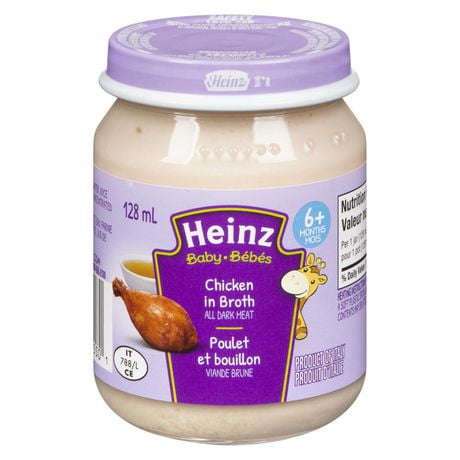
- Your baby has severe eczema.
- Your family has a history of food allergy and you’re concerned about starting solids.
- You’re worried about reactions to foods.
Baby’s first foods – Healthy eating from around 6 months
Baby’s first foods – Healthy eating from around 6 months
Starting solid food is exciting! It’s not just about eating healthy food – your baby is learning how to eat and to enjoy food, and to experience new tastes and textures. These early days will shape her attitudes to food and eating.
Getting started
At around 6 months, your baby needs more iron and other nutrients than he can get from breastmilk or infant formula.
- Starting solid food before 4 months can increase the risk of allergies.
- Waiting too long after 6 months means your baby may miss out on important nutrients he needs for growing and developing, and may increase the risk of allergies if some foods are avoided.
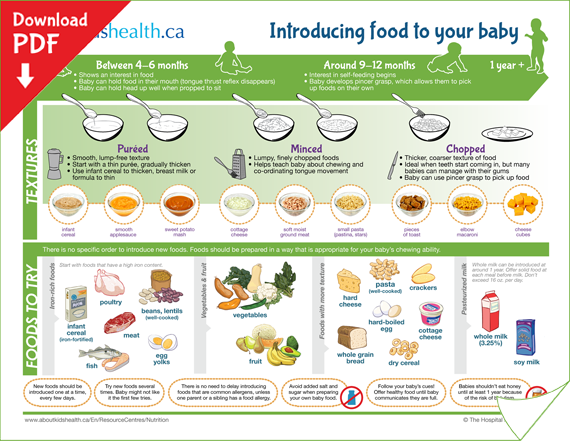
- Keep breastfeeding while introducing solids.
It’s time to introduce solid food if your baby:
- is around 6 months old
- has good head and neck control, and can sit upright when you support him
- seems interested in food – reaching out for food when you’re eating
- opens his mouth when you offer him food
- takes pureed food from a spoon without pushing it out of his mouth with his tongue
- looks for more food after a breastfeed or formula feed.
Every baby is different
If you are having problems or if you aren’t sure if your baby is ready for solid foods, talk to your child health nurse or doctor.
How do i start?
Pick a time when you and your baby are happy and relaxed.
- Your baby (and you) will enjoy it more if sitting comfortably and supported, and not too tired or hungry.
- Use a soft, plastic spoon.
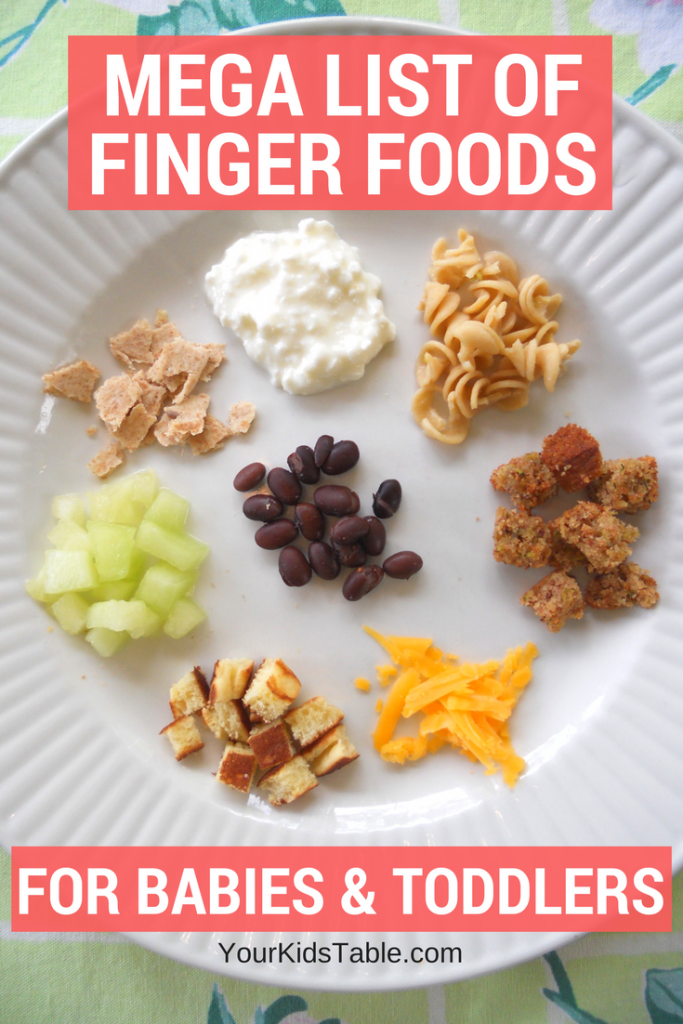
- Start with small tastes of food after a breastfeed or formula feed.
Your baby is probably hungry when she:
- is excited when she sees food
- leans forward towards you when sitting
- opens her mouth, ready to be fed.
Your baby is probably not interested in eating when she:
- turns her head away
- is distracted and not interested
- pushes the spoon away
- firmly closes her mouth.
Preparing baby's food
Cook vegetables, fruit, meat and chicken or meat alternatives in a little water or baby’s milk.
Don’t add sugar, salt or processed seasoning.
To puree foods, use a blender or mash the food through a sieve.
Tip
Store homemade food in ice cube trays (with a cover), in small sealed containers or in bags in the fridge or freezer.
What food?
Start with foods that are high in iron:
- iron-enriched baby cereals
- pureed meat or chicken
- cooked tofu
- legumes (beans, peas and lentils).
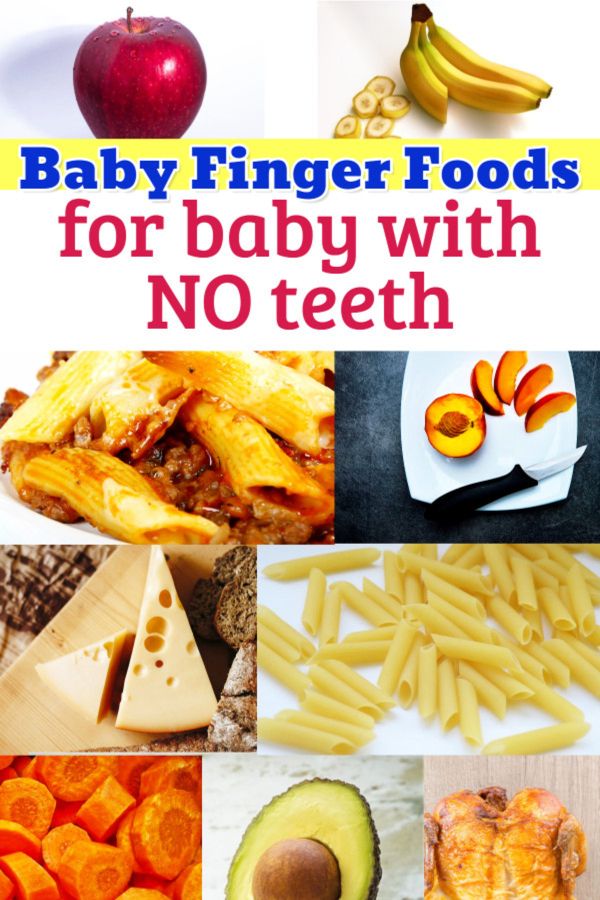
After this, you can introduce new food in any order, and more than 1 new food at a time. It’s OK to mix different food together.
Try to give your baby homemade food if you can.
This is also a good time to think about your own diet – and make some healthy changes.
Offer a variety of foods from the Five Food Groups:
- vegetables/legumes/beans
- fruit
- grain (cereal) foods
- lean meat/poultry/fish/eggs/tofu
- milk/yoghurt/cheese
Find out more about the Five Food Groups (external site).
Dairy food
Full cream cow’s milk, cheese and yoghurts are best until your baby turns 2, then you can offer low fat varieties.
Vegetarian diet
If you are feeding your child a vegetarian diet, talk to your nurse, doctor or a dietitian to make sure they are getting all the nutrients they need.
How much food and when?
- Once a day, start with a teaspoon of iron-rich food after a breastfeed or formula feed.
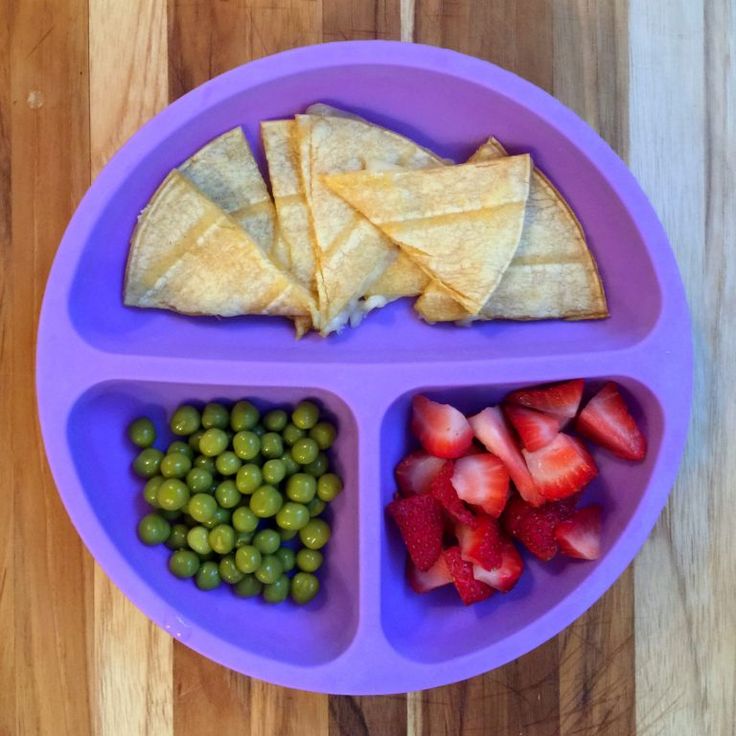 Mix the food with your baby’s milk or boiled water into a smooth paste.
Mix the food with your baby’s milk or boiled water into a smooth paste. - Introduce a variety of foods, moving from pureed→smooth→mashed→ soft pieces.
- Gradually increase the amount from 1 or 2 teaspoons up to 2 or 3 tablespoons, according to your baby’s appetite.
- Start with 1 meal and gradually increase the amount. By 8 months, your baby should be having 3 meals.
- Once your baby is eating a variety of foods, offer food before your baby breastfeeds.
Babies know when they are full or hungry, so it is important for you to recognise your baby’s hunger and full ‘signs’.
What drinks?
- Breastmilk for the first year, and as long as you want after that.
- Lots of cooled, boiled tap water from 6 months (from a cup).
- If baby has formula, stop using it at 12 months.
- Full cream cow’s milk from 12 months (from a cup).
Start with a sippy cup with a lid, but work towards no lid as soon as possible. Avoid cups with valves.
Avoid cups with valves.
Continued use of bottles is linked to tooth decay.
Textures
It is important to offer lots of different tastes and textures, suitable for your baby’s stage of development.
- Start off with smooth or pureed foods.
- Once your baby is used to that texture, quickly move on to mashed, followed by lumpier foods.
- At around 8 months, your baby will be ready to eat diced, chopped, soft strips and finger foods.
Textured foods help your baby to chew. This helps develop the muscles used for talking.
- Don’t worry if your baby has no or few teeth. He can chew mashed and finely diced food with his gums.
- Don’t worry if your baby ‘gags’ – it’s a natural reflex to avoid choking. It’s also a normal response to a new texture.
- Offer foods your baby can pick up. As your baby develops, he will start wanting to feed himself.
- Don’t worry if your baby spits out food. Learning to eat takes time and patience.
 If your baby doesn’t like a type of food, try it again some other time. You might have to offer it many times before your baby accepts the new taste or texture.
If your baby doesn’t like a type of food, try it again some other time. You might have to offer it many times before your baby accepts the new taste or texture.
Tips
- Be relaxed.
- Talk to your baby about the food he’s eating. Look into his eyes, and make sure there are no distractions.
- Turn off the TV and other screens.
- Sit your baby with the family at meal times so he can watch, learn and join in.
- It will be messy!
- Put newspaper or plastic under the high chair.
- Be prepared for a change in your baby’s poo!
- Different foods create different coloured poo.
Commercial baby food
- Commercial baby food (in a jar or a pouch) can be handy when travelling or in an emergency.
- It’s not a good idea to use them a lot – your baby can get used to the taste and smooth texture of these foods.
- With home-cooked food, you are giving your baby lots of variety in taste and texture, and it’s a lot cheaper.

What not to give your baby
Honey
The bacteria in honey can make babies sick – don’t give her honey until she is 1 year old.
Raw eggs and raw meat
The bacteria in raw eggs and meat can make babies sick. Cooked eggs and meat are OK.
Salt and sugar
Your baby doesn’t need salt, sugar, or processed flavours added to her food. She has sensitive tastebuds, so will enjoy her food just as it is.
These drinks:
- cow’s milk/goat’s milk (at least until she’s 1 year old)
- soy drinks (unless under doctor’s advice)
- alternative ‘milk’ such as rice, oat, coconut and almond milk
- follow-on toddler formula (these are not necessary)
- fruit juice – these have lots of sugar and can cause tooth decay and reduce your baby’s appetite. They can also cause an upset tummy or runny poos.
- soft drinks, cordials, flavoured milk – these have lots of sugar, and can cause
- obesity and tooth decay
- energy drinks – these contain guarana and caffeine which are not safe for babies or children
- tea, herbal tea – the tannin in tea can affect how your baby absorbs iron
- coffee, cola – the caffeine in coffee and cola is not safe for babies or children.
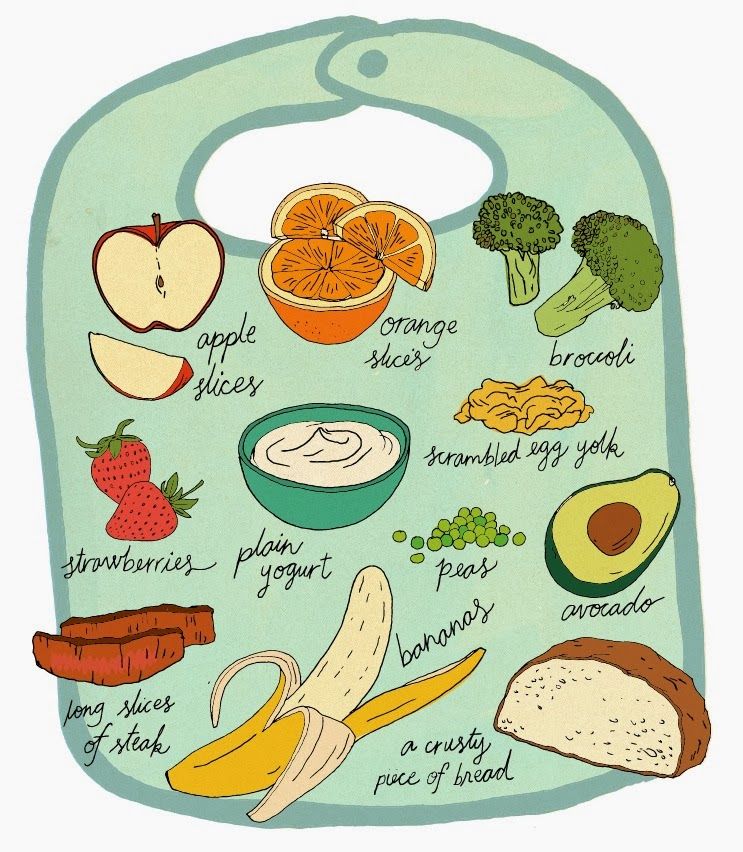
Feeding your baby: the first 12 months
The first 6 months
- breastmilk
- commercial infant formula.
At about 6 months
- start with iron-rich foods
- try new foods in any order
- smooth puree → mashed foods (mash with a fork)
- cooled boiled tap water in a cup
- start with a teaspoon after their milk feed
- increase when your baby is ready to eat more
At about 8 months
- thicker/chunkier food → finely chopped food → finger foods
- babies like to feed themselves
- about 3 meals a day
- cooled boiled tap water in a cup
At 9 to 12 months
- lots of different foods and textures
- sit with the family to eat family foods (baby will like to self-feed)
- cooled boiled tap water in a cup
- about 5 small meals a day
- learning to eat is messy!
Where to get help
Local community or child health nurse
- See inside your baby's purple All About Me book
- Look in the service finder for child health centres
- Visit your nearest child health centre
Local family doctor
Dietitians Association of Australia
- Visit the Dietitians Association of Australia website (external site)
- Look for your local dietitian in the Yellow Pages
- Accredited Practising Dietitian (APD) Hotline – Freecall 1800 812 942 (free from land line only)
Australasian Society of Clinical Immunology and Allergy (ASCIA)
- Visit the ASCIA website (external site)
Ngala Parenting Line
- 8.
 00am – 8.00pm 7 days a week
00am – 8.00pm 7 days a week - Phone: (08) 9368 9368
- Outside metro area – Free call 1800 111 546 (free from land line only)
- Visit the Ngala website (external site)
Raising Children Network
- Visit the Raising Children Network website (external site)
- Visit healthdirect (external site) or call 1800 022 222
Prevent choking
Always watch carefully when your baby is eating.
- Don’t let your baby move, crawl or walk with food in his mouth.
- Babies and young children can choke on food that is small, hard, round or sticky.
- Remove small bones and gristle from meat, chicken and fish.
- Remove the skin from sausages. (Sausages are not recommended for babies as they are high in salt and fat.)
- Cook, then grate or mash all hard fruit and vegetables like apples, carrots and beans.
Food safety
Babies can easily get very sick from food poisoning. It is important to keep your baby’s food safe.
It is important to keep your baby’s food safe.
- Wash your hands before preparing food.
- Wash your baby’s hands before eating.
- Clean utensils and work surfaces.
- Use separate chopping boards and utensils when preparing raw food and ready-to-eat foods.
- Use clean spoons, cups, bowls and plates.
- Wash all fruit and vegetables.
- Store prepared food in a sealed container in the fridge or freezer.
- Always store raw meat in containers or wrap in the BOTTOM of the fridge so raw meat juices can’t drip onto other foods.
- Re-heat pre-prepared food really well, and then cool it down, before giving it to your baby.
- Never re-heat food more than once.
- Never keep food that your baby has dribbled on.
- Keep pets away from food and food preparation surfaces.
Allergies
Please talk to your doctor if you are worried about allergies, particularly if your baby already has severe eczema or food allergy, or other members of your families have allergies.
Even if some family members have food allergies, you don’t need to delay starting solids foods, or not offer some types of foods to prevent allergies.
In fact, delaying or avoiding some foods can increase the risk of your baby developing an allergy.
From 6 months, you can offer your baby cooked egg, smooth nut pastes (including peanuts and tree nuts), wheat, cow’s milk (in cooking), sesame, fish and shell fish at regular intervals.
Some food can irritate the skin around the mouth or cheeks as your baby’s skin is very sensitive. This includes citrus, tomatoes and berries – this is not a food allergy.
Some babies are allergic to some foods. Most symptoms of food allergy are mild to moderate.
Watch for:
- swelling of face, eyes or lips hives or welts (red lumps on the skin)
- vomiting and diarrhoea
- rashes or redness of the skin.
Call an ambulance
call an ambulance if your baby has these severe reactions to any food:
- difficult or noisy breathing
- swelling of the tongue
- pale skin and floppy.
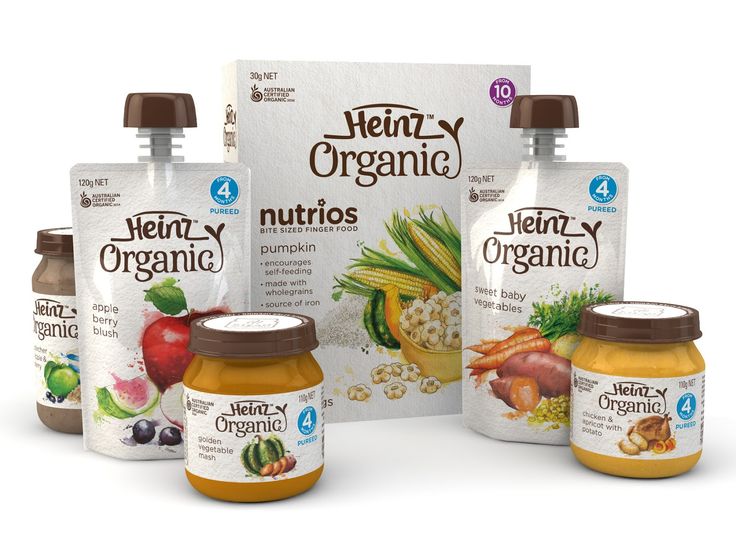
Last reviewed: 31-05-2019
Acknowledgements
Child and Adolescent Health Service – Community Health (CAHS CH)
This publication is provided for education and information purposes only. It is not a substitute for professional medical care. Information about a therapy, service, product or treatment does not imply endorsement and is not intended to replace advice from your healthcare professional. Readers should note that over time currency and completeness of the information may change. All users should seek advice from a qualified healthcare professional for a diagnosis and answers to their medical questions.
First complementary feeding of children with artificial feeding - Start of complementary feeding on IV
Babies grow so fast, and now an important and new stage is coming for both parents and crumbs: the introduction of the first complementary foods! Complementary foods are all new food for the child, except for the already familiar breast milk, formula and water. As the baby grows, regardless of whether he is on breastfeeding or IV, milk protein alone becomes insufficient for the harmonious development of the body and strengthening immunity. It is from complementary foods that the child will receive the nutrients, elements and vitamins necessary for his growing body. Therefore, it is so important to carefully choose the products for the first feeding of the crumbs, to cook only healthy “dishes”!
As the baby grows, regardless of whether he is on breastfeeding or IV, milk protein alone becomes insufficient for the harmonious development of the body and strengthening immunity. It is from complementary foods that the child will receive the nutrients, elements and vitamins necessary for his growing body. Therefore, it is so important to carefully choose the products for the first feeding of the crumbs, to cook only healthy “dishes”!
Often, parents of formula-fed babies are especially worried about how to properly introduce the first complementary foods, when to start and with what foods. You should not think that if your child is fed a mixture, and not breast milk, then his body urgently requires some additional nutrients and the first complementary foods will be radically different. Regardless of the type of feeding, complementary foods must be introduced according to certain rules.
When should I start weaning with IV?
Here are the signs that parents can understand: it's time to try new foods, the baby is ready!
1. The baby sits with a little support from the parents or on their own.
The baby sits with a little support from the parents or on their own.
2. The baby already has teeth or they are being cut.
3. He can drink liquid from a spoon.
4. The child has an interest in food.
5. The baby purposefully “pulls” objects into the mouth.
Complementary feeding with artificial feeding will begin at an earlier age of the child. The optimal time is 4 - 4.5 months, but the pediatrician will tell you the exact timing.
How to introduce complementary foods correctly?
-
Pediatricians advise starting complementary foods with half a teaspoon and by the end of the first week (in 7-10 days) increase the volume to two spoons.
-
Complementary foods should be given before the main feeding with the mixture, in the morning or afternoon feeding.
-
One new product at a time, the next product is introduced in a week.
-
Keep a baby food diary.
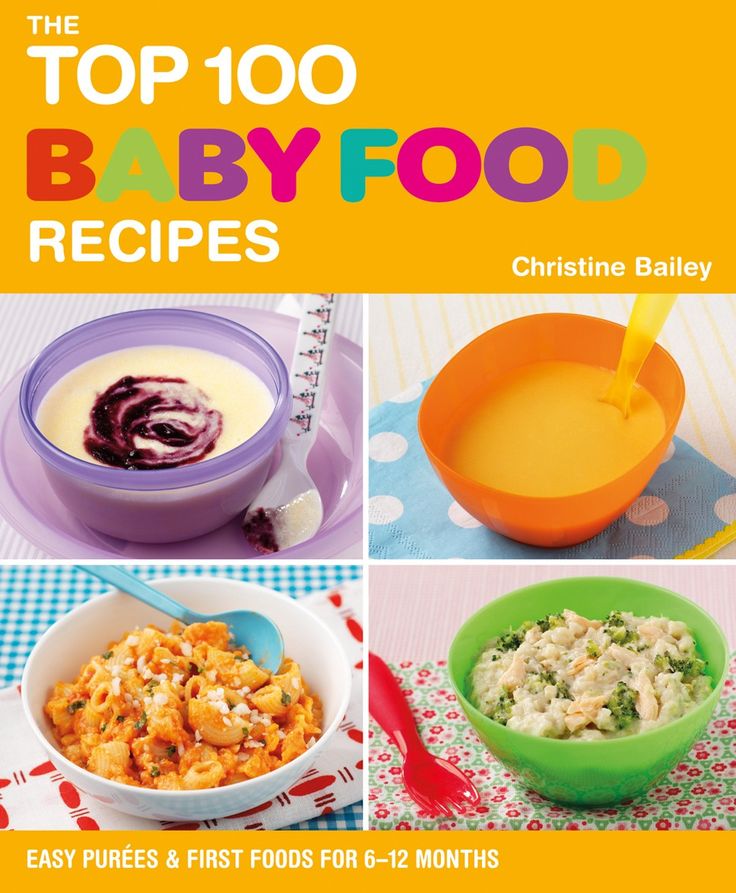
-
Do not force the child to eat complementary foods if he does not want to, give the baby time, listen to his tastes
-
Complementary foods are introduced in the form of puree.
-
The mixture remains in the baby's diet for approximately one year.
-
Complementary foods are introduced only to a healthy child: if the baby has a temperature, there are skin rashes, gastrointestinal disorders, you should wait a little with the start of complementary foods.
Complementary foods for IV: which product to start with?
The optimal first complementary foods for artificial feeding are vegetable purees, they are best absorbed by the body. It is good to start with zucchini, pumpkin, broccoli, cauliflower. An exception is the situation with a lack of body weight in a child: then complementary foods begin with gluten-free cereals, and only then give vegetable purees.
Next, you can give the child a taste of fruit purees. When the child gets used to the innovations, you can start combining fruits and vegetables.
When the child gets used to the innovations, you can start combining fruits and vegetables.
The procedure for introducing new foods into the child's diet should be agreed with the doctor, who will also tell you a list of allergenic foods and give you a table for the introduction of complementary foods. Sugar and salt for a child under one year old are prohibited.
Why is it important to prepare your own complementary foods?
Despite the huge number of ready-made jars of mashed potatoes, it is advisable to prepare complementary foods with artificial feeding yourself. So the baby will eat only natural and healthy products. In addition, it is economically beneficial, especially during the season of vegetables and fruits. At first glance, it may seem to the mother that preparing complementary foods at home is difficult, and the process will take a lot of time. This is not so: the main thing in this business is to “enlist the support” of smart technology, and then the process will go fairly quickly and comfortably.
Vegetable purees are prepared as follows: vegetables are boiled in a small amount of water or steamed (without salt), then crushed to a puree state. At first, mashed potatoes can be diluted with vegetable broth in which vegetables were cooked. The multifunctional AGU Octopy processor or the AGU Cookee mini-processor will help you prepare mashed potatoes: these devices combine the functions of a double boiler and a blender, maintain the required temperature of ready-made dishes.
If you need to use cereals as the first food, then remember that they must have a liquid consistency. To prepare porridge, add 5 g of cereal flour to 100 ml of boiling water and cook until tender. Grinding cereals to the state of flour can be done in any of the AGU processors. If you buy ready-made cereals for a baby, then they must be brewed with boiled water, cooled to 40-45 degrees. The AGU Bubbly kettle will help to cope with this task: it will boil water, then cool it and keep it within the required temperature range.
Complementary feeding of children with artificial feeding should be varied and contain all the necessary useful elements for the harmonious development of the crumbs. Let the baby grow up healthy!
Baby food Complementary foods | NatalyVlad Blog
2014.11.24 - Life in Australia: Baby food - Baby's first food - Baby food
Life in Australia: Baby food - Baby's first food - Baby food
24 November 2014, Monday
Yes… Time flies! Nikita will soon be 5 months old! There is a question about complementary foods, about the very first products from baby baby food - where to start, what portions, proportions, in what sequence ...
We are absolute beginners in this business, everything, everything, everything is new to us.
Of course, we stomped to consult with our general practitioner (she is also a pediatrician).
Anna recommended that we start simple - with apple juice, and use only green apples for now - mix 25 ml of freshly squeezed juice with 25 ml of water. Give in the morning for three days in a row (and in general every new product introduced is like this) and monitor the reaction during the day - is there an allergy or not.
Give in the morning for three days in a row (and in general every new product introduced is like this) and monitor the reaction during the day - is there an allergy or not.
We bought a juicer for this business - like this, only we have a white one:
| Philips HR1863 Viva Collection, Silver Juicer — Photo & Reviews |
The unit is still the same! Extracts juice in seconds. Liked.
So funny. When they fed Nikita from a bottle for the first time with apple juice, both stood “over their souls”, they were afraid that it would suddenly turn into spots ... But everything worked out, mmm.
Here are the first three days with apple juice behind. Nikita didn’t even blink an eye all three times - he drank everything to the bottom and didn’t even “ask, what is so strange? ...”, he didn’t even wince. As if every day since birth, all he did was drink freshly squeezed apple juice.
Give him free rein, and daddy's smoothie would be eaten at once.
In general, the first product passed the test. Now (again on the recommendation of our doctor) we took up the next one - egg yolk .
Half of the yolk (hard-boiled egg) is rubbed with a spoon and mixed with milk (baby formula in our case).
I drank this morning and didn't bat an eyelid. The whole day "watched" - everything seems to be clean so far. But there are still two days of “testing” ahead.
In general, here we have a lot of our healthy wholesome food (and daily pleasant fuss with it) and Nikitino's baby food is added - complementary foods. We only do what we cook, but the main thing is health, it is more important!
These are the “pies” we have here. Bye Bye.
Your restless Nata, Tyoma and Nikita
Apropo, we have the “second portion” of childhood vaccinations behind us (those at 4 months old) - if the first went unnoticed at all, then after the second there was a mild temperature (half a day literally) and then another sleepless night (we assume that the cause was colic).